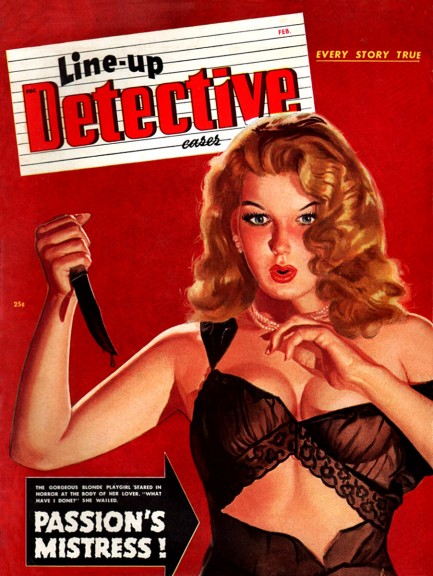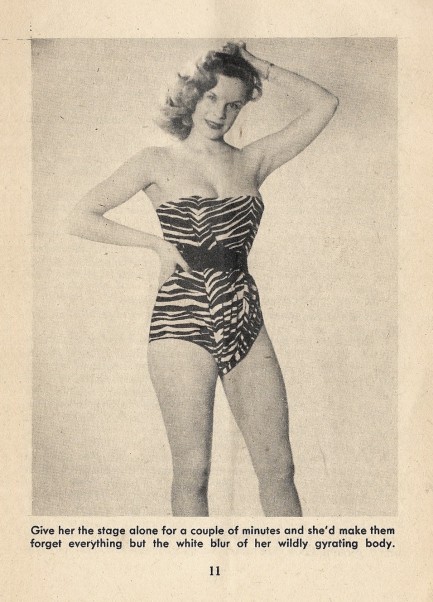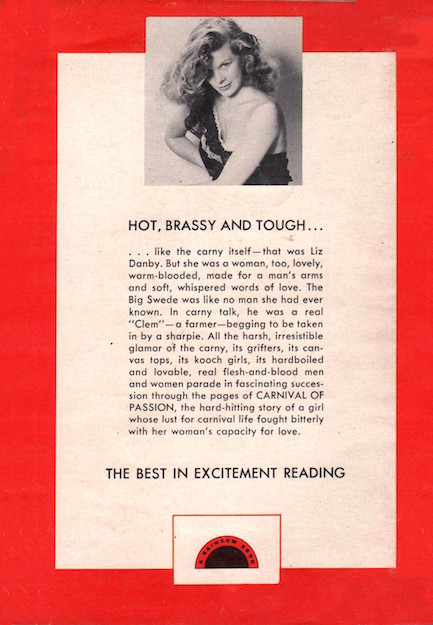 In pulp you're always on the wrong side of the tracks. 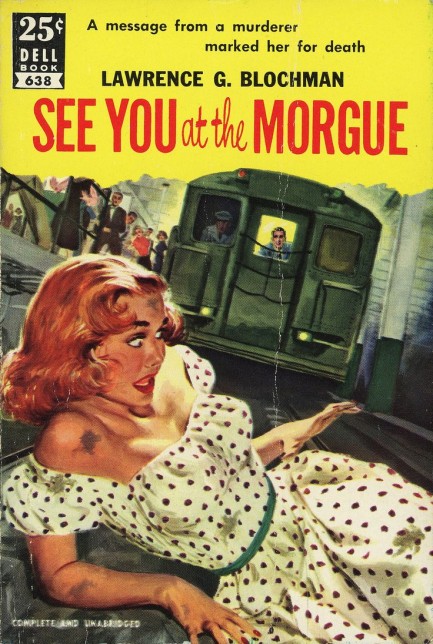
We're train travelers. We love going places by that method. It's one of the perks of living in Europe. Therefore we have another cover collection for you today, one we've had in mind for a while. Many pulp and genre novels prominently feature trains. Normal people see them as romantic, but authors see their sinister flipside. Secrets, seclusion, and an inability to escape can be what trains are about. Above and below we've put together a small sampling of covers along those lines. If we desired, we could create a similar collection of magazine train covers that easily would total more than a hundred scans. There were such publications as Railroad Stories, Railroad Man's Magazine, Railroad, and all were published for years. But we're interested, as usual, in book covers. Apart from those here, we've already posted other train covers at this link, this one, this one, and this one. Safe travels. 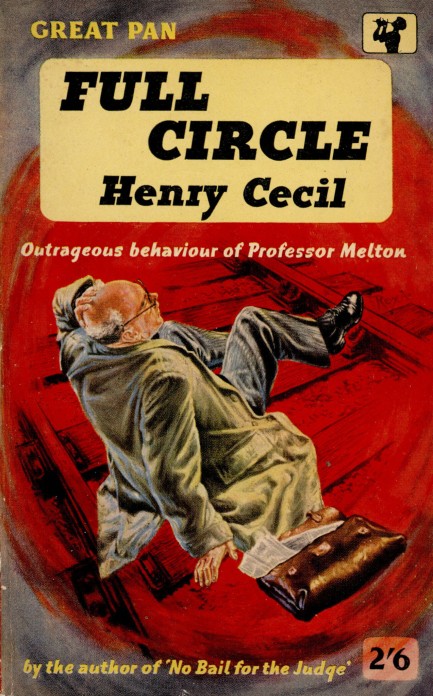 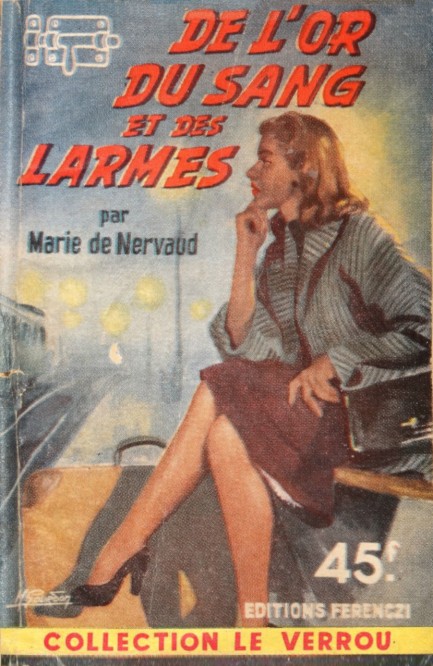 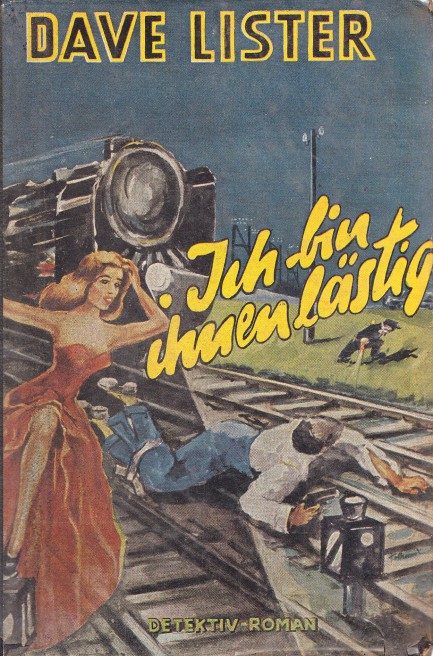 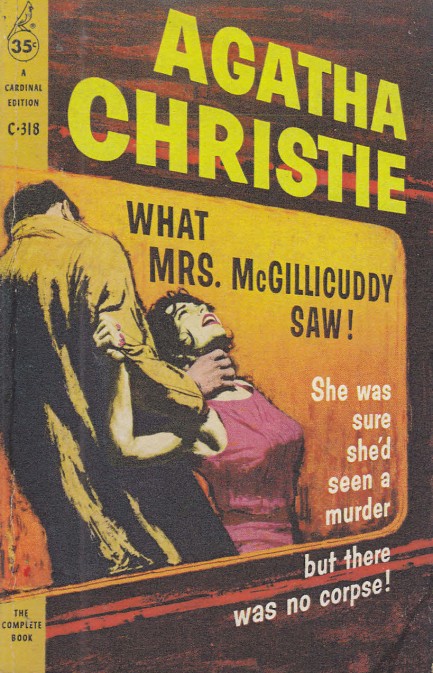 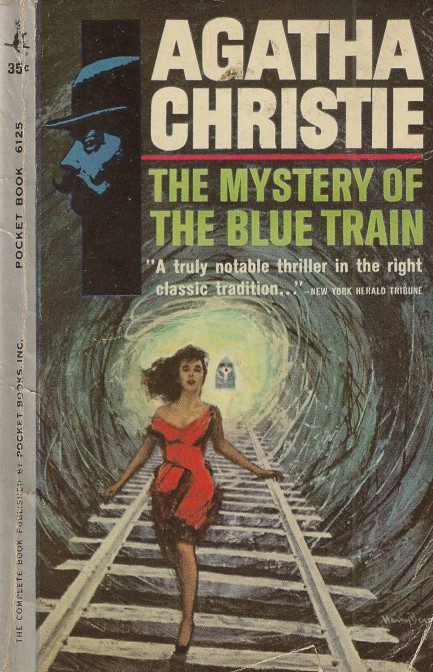 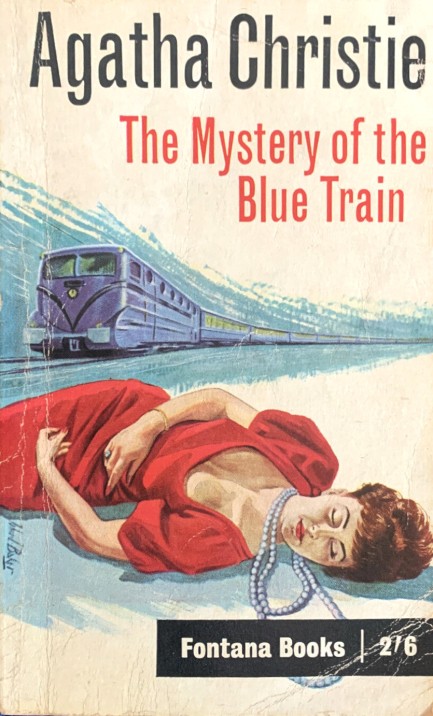  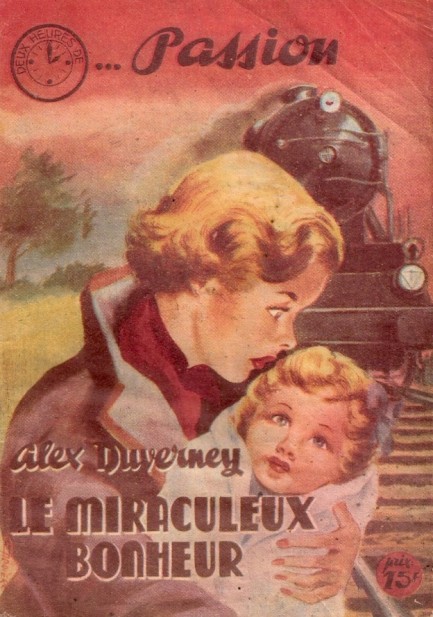 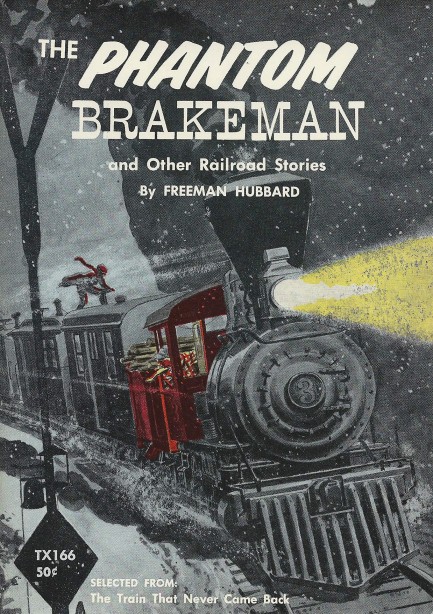 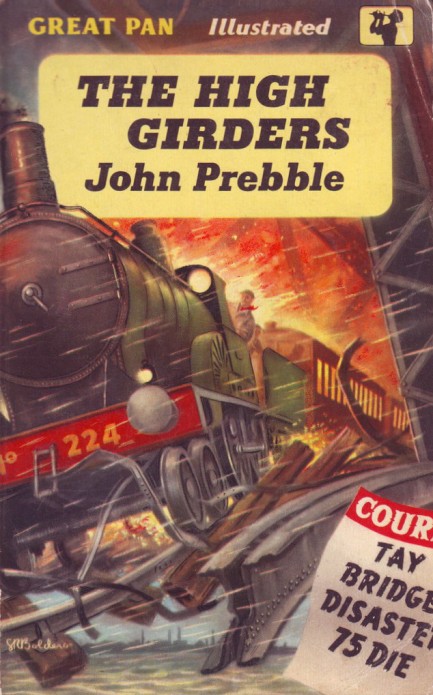 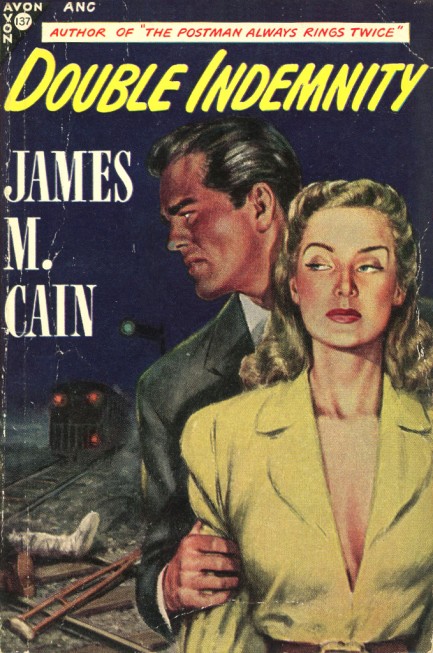 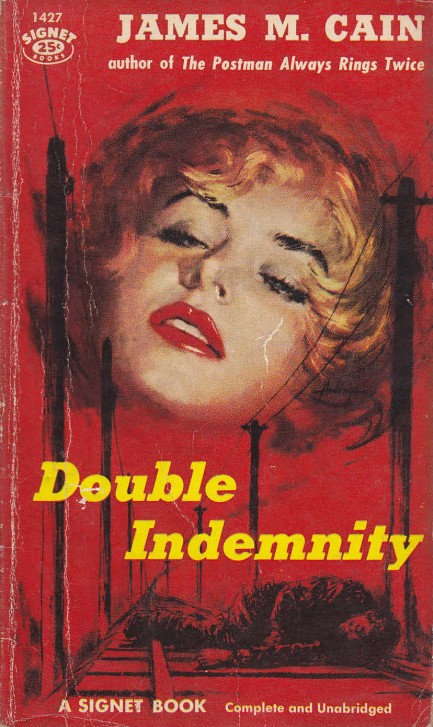 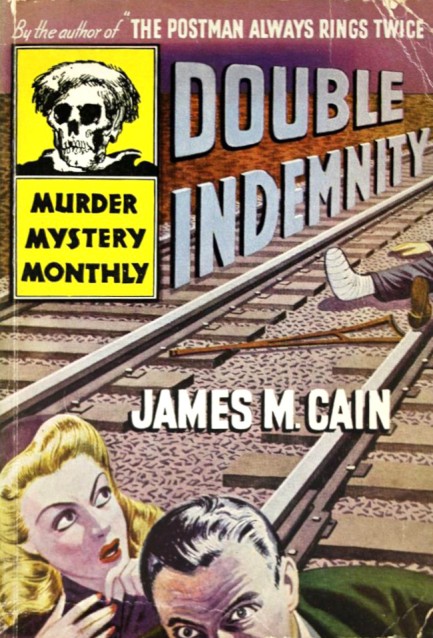 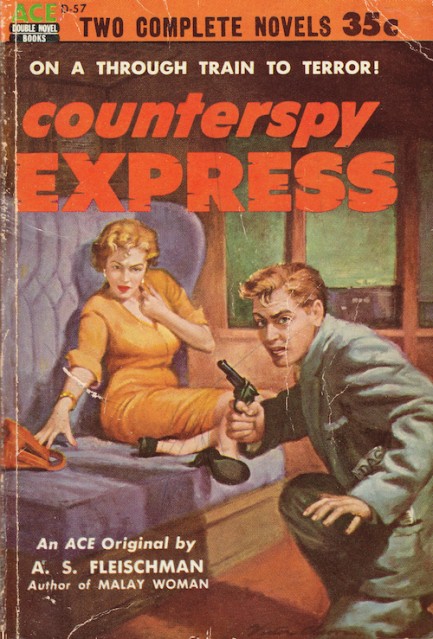 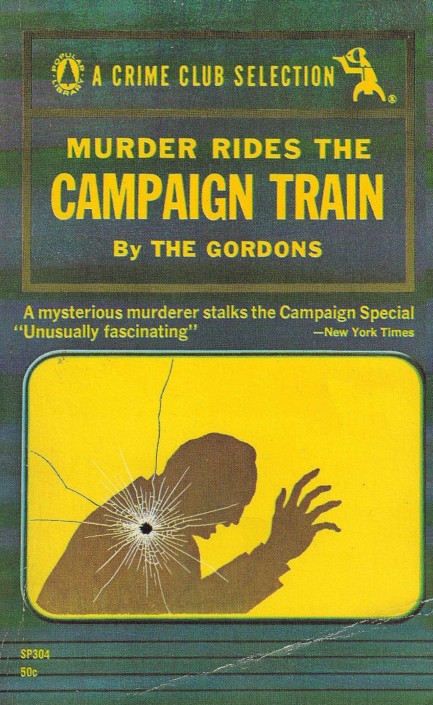 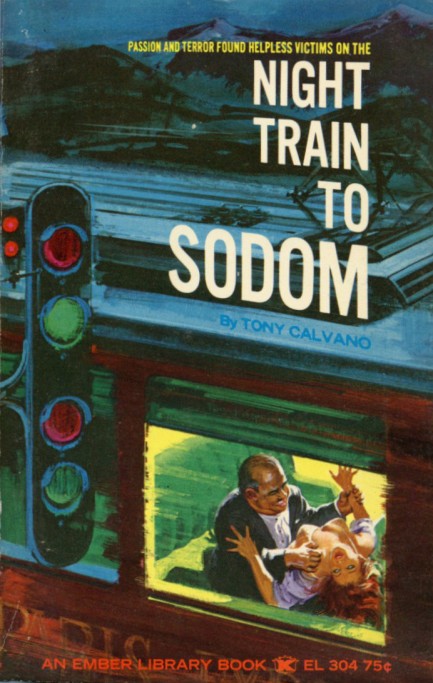 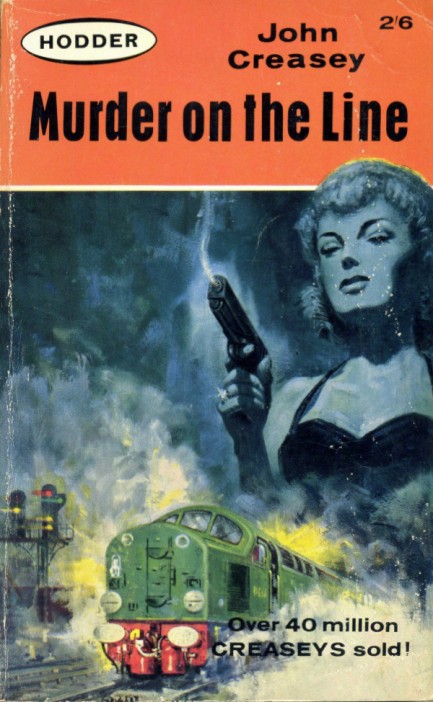 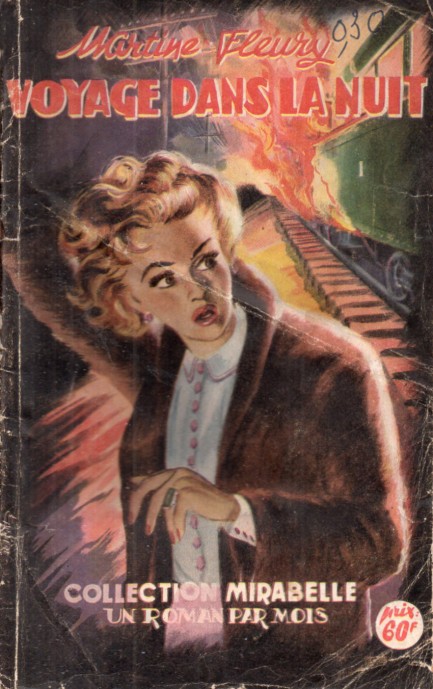 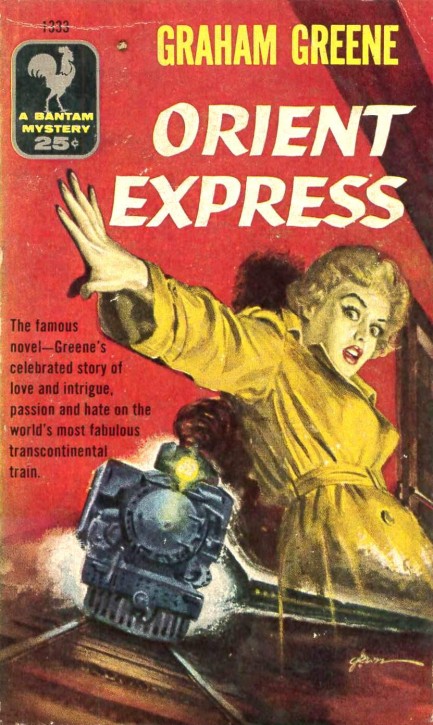 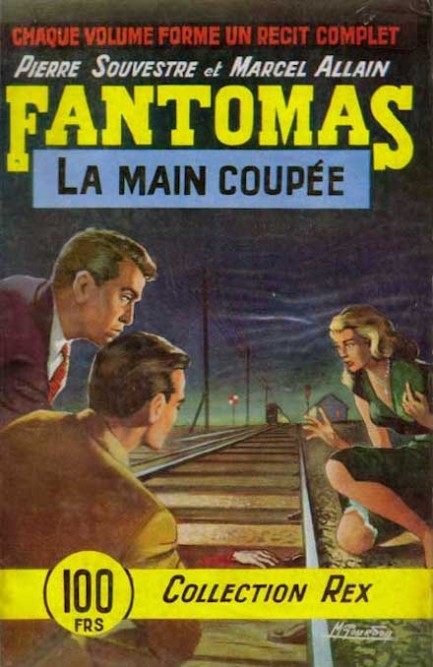 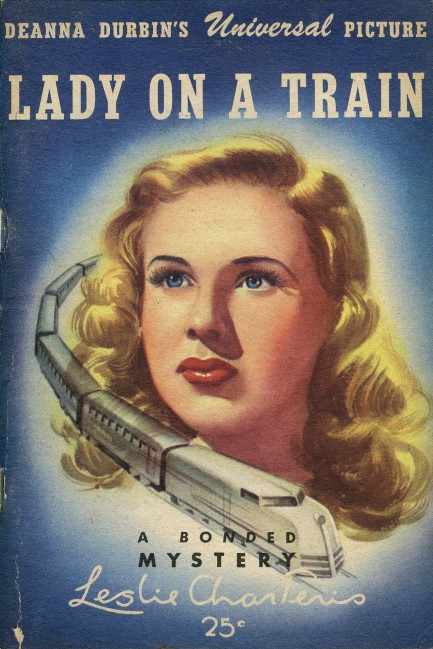  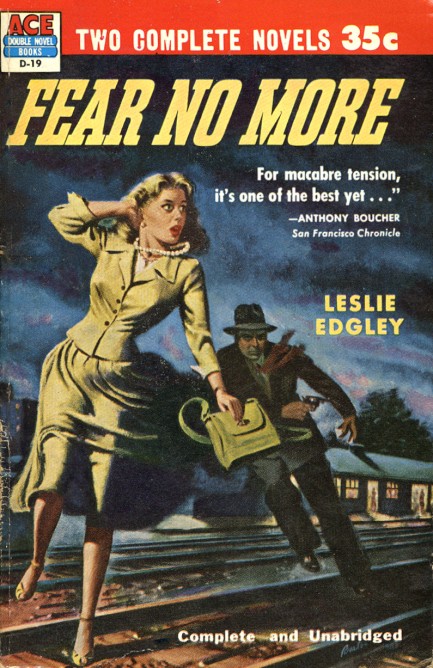 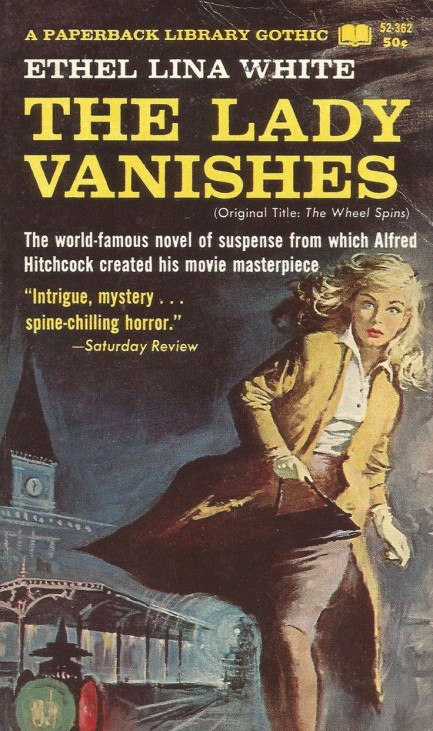 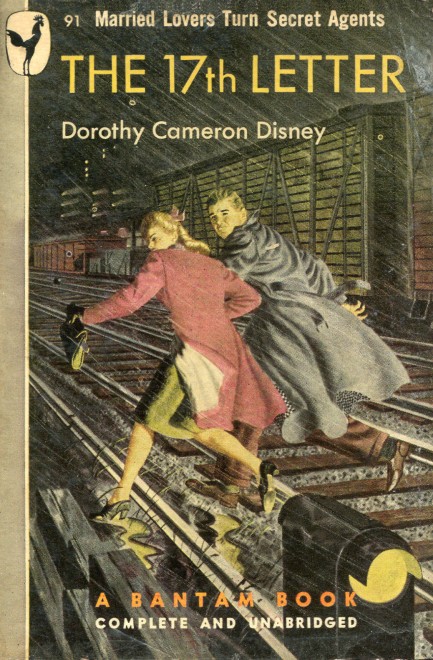 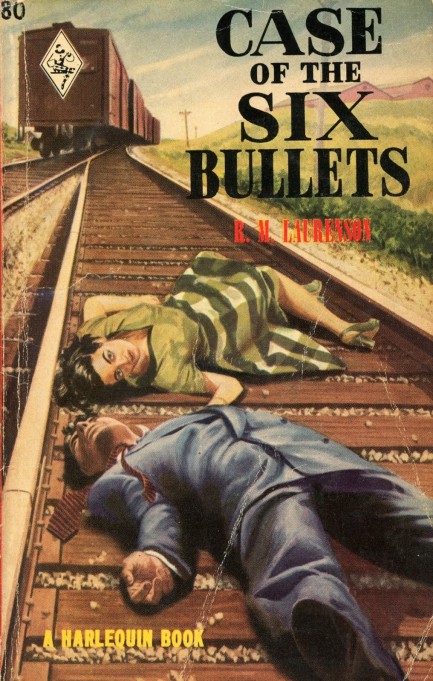
 I don't go home with strangers, mister. So let's take a few minutes and get to know each other. 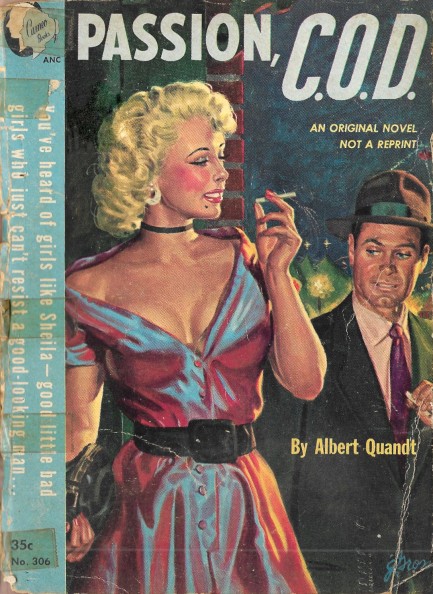
Our copy of Albert Quandt's Passion C.O.D. holds together only thanks to the miracle of scotch tape, yet the great George Gross cover still shines through. It's another masterpiece from him—and another nice addition to our collection. The “c.o.d.” in the title doesn't relate to Quandt's story in any discernible way, unless we start speculating that the “c” stands for something other than “cash.” That's right—we just went there, because this is an unusually lusty novel, considering its 1951 copyright. The main character, the beautiful Sheila Salem, defying norms for literature of the period, gets with multiple men and arrives in the tale with a history of having done so for years. That's fine—we love lusty women. She also habitually ruins men. Is absolutely driven to do it. Again, fine. Hell, those two elements are vintage crime literature in a nutshell—lusty women; dudes ruined. Huzzah.
But on the down side for modern readers, Sheila believes forceful, even violent men, are “real men.” If any of you are seeking Exhibit A for a seminar on male authors writing female characters as embodiments of sexist mid-century attitudes, this is your baby right here. But we can't say Quandt is unable to write. For this genre, he's a better author than most. His story sustains interest. As Sheila discards empty husks of men behind her, gets one guy sent to prison, shoots another, and is soon consorting with criminal types, the only question becomes whether her behavior with these dupes will cost her. In pulp, dupes are expendable, so we were rooting for Sheila all the way. But to find out what actually happens you'll have to lay out cash for the book yourself.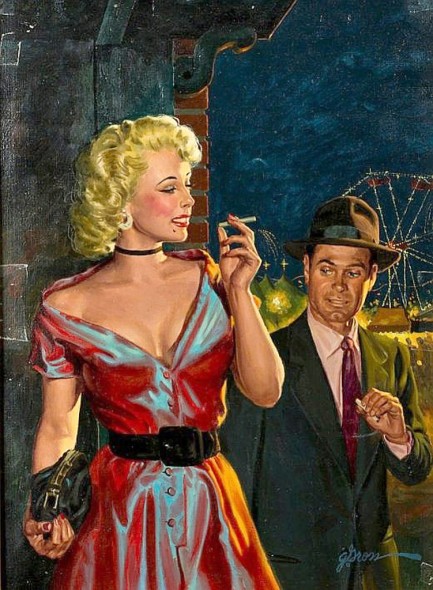 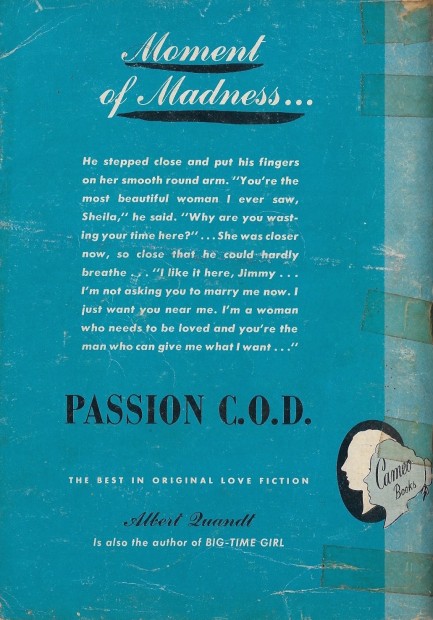
 What do you mean you're not in the mood? 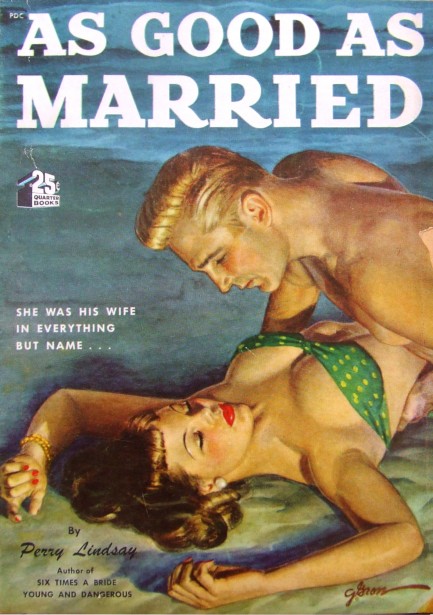
It's time for another look at George Gross, one of the true giants of mid-century paperback and magazine illustration. On this cover for 1945's As Good As Married you see that the artist who was a master of ornate clothing and highly sculptural hair was also capable of dialing it back a bit. The author here, Perry Lindsay, was Peggy Gaddis writing under a pseudonym. We recently bought a book she wrote as Lindsay that we'll get to in a bit. She's usually an entertaining author, so we're looking forward to that.
 There are different ways to win and lose, cowpoke. You'll find that out if you keep me waiting one more hand.
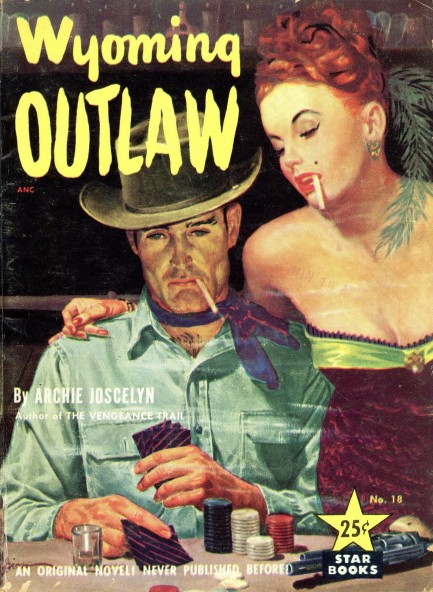
The temptation to buy Archie Joselyn's 1951 Star Books western Wyoming Outlaw was strong, but we have so many books piled up it's stupid. Plus, the Pulp Intl. girlfriends say—well, actually just PI-1 says this—we have too many books and too many plants. First of all, there's no such thing as too many books. Second, is it our fault that plants grow like viruses in this climate? No. But they win this round. We do have a lot of new books because our Stateside visitors over the last several months were each laden with a set we arranged to be mailed to their homes, which they then muled across the pond for us. Big thanks to them for reducing our mailing expenditures considerably. True friends, they are, and those tend to be thin on the ground as time goes by. You'll see those books begin popping up soon.
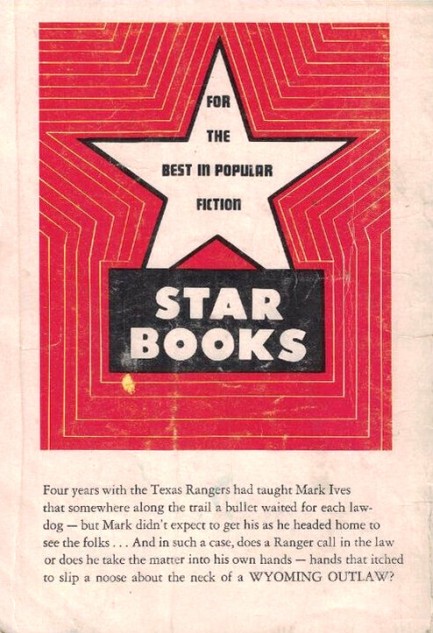
 Southwest Florida gets obliterated but most of the wreckage is human in MacDonald disaster drama. 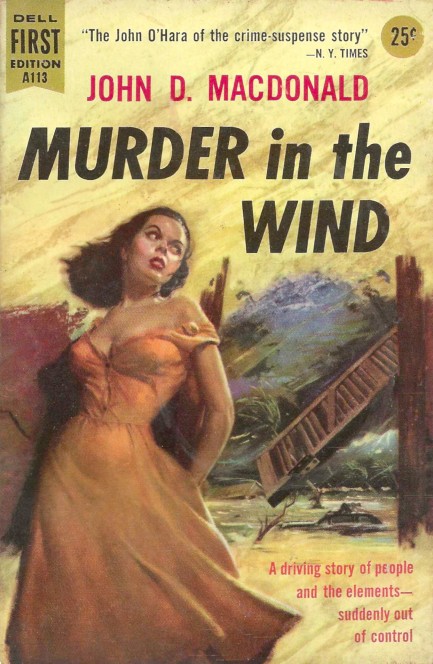
The three weather based thrillers we've discussed—A Town Is Drowning, Tropical Disturbance, and Death at Flood Tide—represent a minor fraction of the total in mid-century fiction. It's no surprise, then, that an author as prolific as John D. MacDonald also tested the waters. Murder in the Wind, also known as Hurricane, came in 1956 during the more fertile, less censorious period for MacDonald, and presents readers with a disparate selection of people who all hole up in an abandoned house during a hurricane named Hilda. Eventually the house is swept away entirely, but the story is never less than solidly grounded and engrossing. If your time is limited you might skip this one in favor of The Damned, which is a close cousin, conceptually speaking, but otherwise Murder in the Wind is a necessary read. You get all the fulfillment you'd want from a disaster drama.
 Hey, handsome! Ever get tired of all the uncertainty about how a date's going to end? 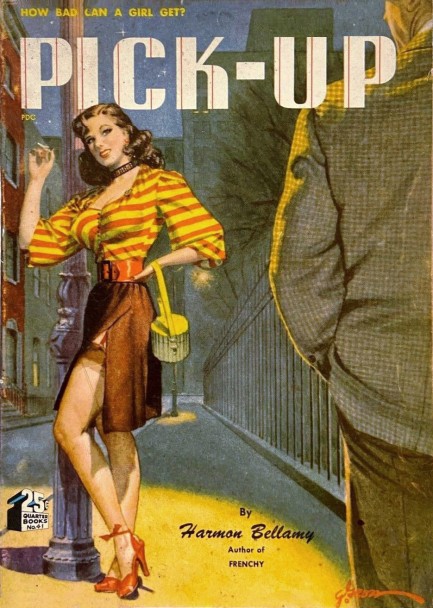
We finally got hold of one of our favorite George Gross covers. He put together this masterpiece for Harmon Bellamy's Pick-Up, published by Quarter Books in 1949, and everything works here—the colors, the framing, the pose, and the cool urban mood. Some of these digests have photo-illustrations inside, but not this one. It does have an ad on the inside front cover, which is below. We've seen this book go for more than two hundred dollars, but ours cost twenty. That makes for a fine day around the palatial Pulp Intl. metroplex.
Amusingly, the cover has nothing to do with the narrative, nor does the title. What happens is a seventeen-year-old girl named Lois Deane runs away to New York City, is immediately hit by a car, and wakes up in the hospital. The guy who hit her discerns her meager circumstances and gets her a job working for and living with his family. Lois has lied to her hosts about who she is, and her deception eventually comes to light. There are no seedy or criminal aspects at all here—Bellamy has written a straightforward romantic drama. For its type, it's fine, though nothing special.
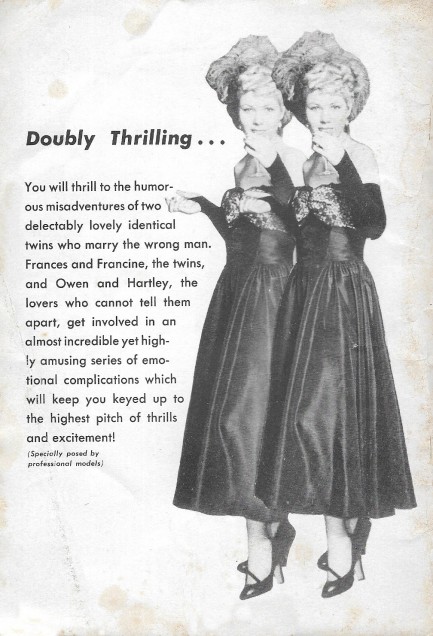
 Oooo... he's rich, widowed, and has a pig valve in his heart? I guess I could learn to love an older man. 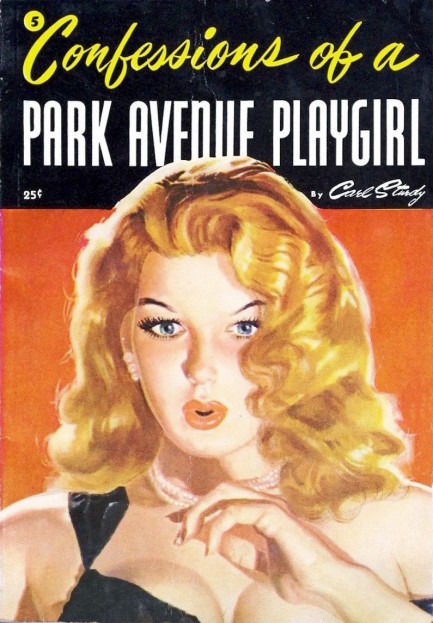
Above: Carl Sturdy's classic digest novel Confessions of a Park Avenue Playgirl, 1947, from Phoenix Press. Sturdy specialized in medical romances with efforts like Unlicensed Nurse, Test Doctor, Doctor De Luxe, Suburban Doctor, et al, but this seems to be the book most people remember. Possibly that has partly to do with the striking art. The artist is unidentified, but it felt to us like a zoom of something larger, and it reminded us of George Gross. Working on those two assumptions, it wasn't hard to track down the source. As you see below, it came from the cover of a 1949 issue of Line-Up Detective Cases. It isn't really a much larger piece, but it is George Gross. Add another fun effort from his lengthy résumé.
 I never have sex on the first date. It's almost midnight. At 12:01 we'll say we're on our second date. 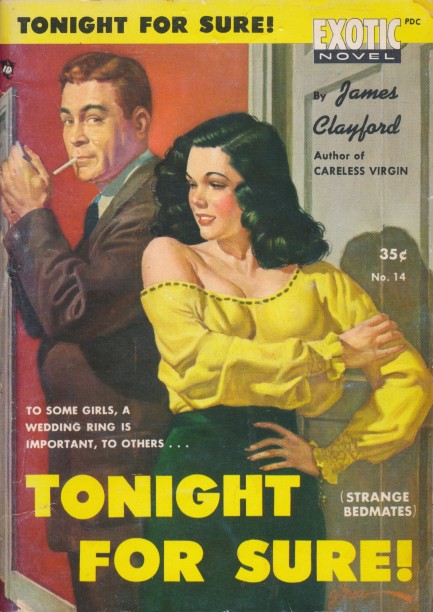 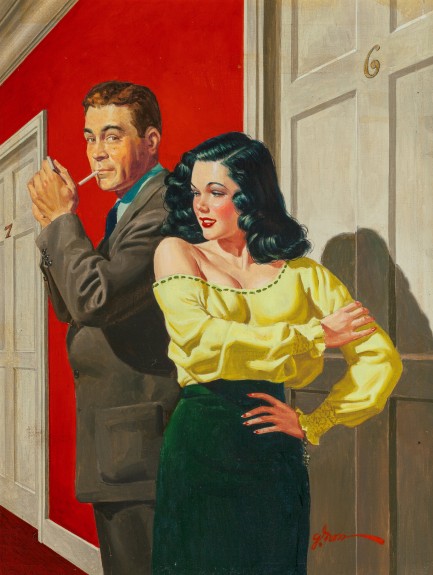
Above: James Clayford's Tonight for Sure, 1951 from Exotic Novels, with yet another amazing cover by George Gross, plus the original art. Clayford was a pseudonym used by Peggy Dern, better known as Peggy Gaddis. We've discussed a couple of her books, and have still others to read that we'll break down later.
 Dammit! First he goes after the sword swallower and now that contortionist. What do these women have that I don’t? 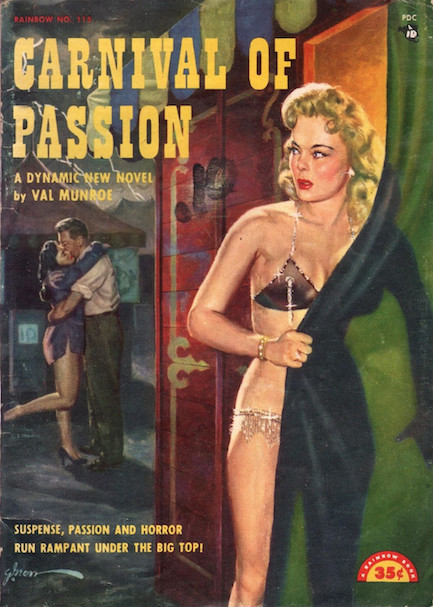
Years ago we wrote a two sentence blurb about Val Munroe's 1952 novel Carnival of Passion, with its excellent cover art by George Gross, but we never got around to reading it. What can we say? It got lost in the shuffle. But we finally cracked it open and decided to move that old post to today, delete what we wrote before, and share our many impressions. This is a first. We pride ourselves on our thirteen years of new content every day, which is why we initially resisted doing this. We'd already used the cover. But we read it anyway, and we're glad we did. There are many mid-century carnival novels. This one qualifies as ironic, because carnivals separated suckers from their money by any means necessary and rarely delivered as promised, while Carnival of Passion is the opposite—entertainment like this can only be considered a bargain.
The story centers on burlesque dancer Liz Danby—young, tough, beautiful, and carny to the core. When her swindler boyfriend cuts a vengeful townie and leaves her holding the bloody switchblade, she's forced to flee the pursuing sheriff while clad in only a g-string. Stranded in a rainstorm in nowheresville and starting from nothing, she manages to find clothes, a bus east, a Nebraska carnival town, and a new stripping job. Something else that's new is the hulking Swedish boxer Lars who she falls for in a big way. The two of them get together, sparks fly, and they plan to make a future together, but the violence and treachery of carny life presents obstacles, and of course there's that old boyfriend, also on the run, who'll never let Liz go. When he finally reappears it's in the midst of multiple subplots of clashing carny tension, and his presence is the spark that's liable to set the tinder ablaze.
Val Munroe, who was in reality an author named Frank Castle, will never be mistaken for a top talent, but his descriptive abilities are more than adequate to the task of detailing hard knock carny life, with its ballyhoos, hot kooch shows, and brutal cash boxing matches. He explains some terminology, but often doesn't bother, and just plows ahead concerning Clems and clems (upper and lower case), blow-offs, 10-in-1s, tips (not money), and more. But the real value of his writing is in the swiftness and conciseness of his story, and how effectively he portrays his protagonist Liz. You know what else is a real value? We were lucky enough to buy this back when it was cheap. We checked today and some joker is trying to sell it for $105. Talk about carnivals separating suckers from their money. It's a fun book, and it even has a couple of photos inside, but a hundred bucks? No. But if you happen to see it for twenty? Jump at it.
 Land ho! Shiver me timbers! Spring break ahoy! Pieces of eighteen year olds! 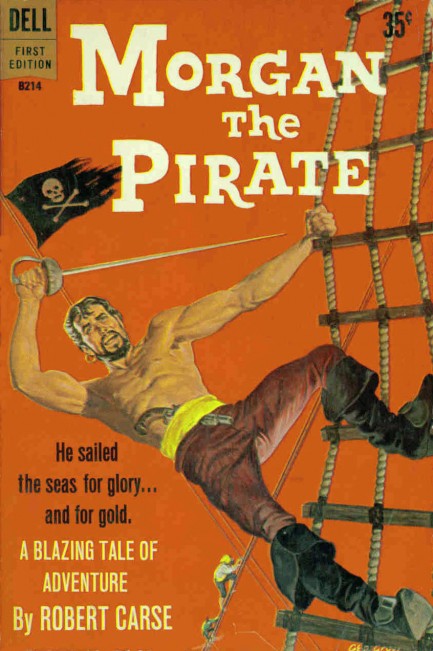
We've shown you many George Gross covers, all brilliant. This one is a little different for him. Morgan the Pirate was published by Dell in 1961 as a tie-in for the Italian adventure film Morgan il pirata, starring Steve Reeves, that indispensable icon of the sword and sandal era of the ’50s and ’60s. We haven't seen the movie, but this illustration has tempted us to queue it up. More than that, it makes us want to go raise hell somewhere. Actually, we had this one ready to go last year around this time when we had a trip planned, but we cancelled the travel and warehoused the image, figuring, okay, spring 2021. But the gag still doesn't really work, because there aren't any spring breaks (for careful people). But we don't want to sit on the cover another year, so here it is. Come on vaccinators, get to innoculating, so we can get to vacationating. Wooo! Shots! Shots! Shots!

|
 |

The headlines that mattered yesteryear.
2003—Hope Dies
Film legend Bob Hope dies of pneumonia two months after celebrating his 100th birthday. 1945—Churchill Given the Sack
In spite of admiring Winston Churchill as a great wartime leader, Britons elect
Clement Attlee the nation's new prime minister in a sweeping victory for the Labour Party over the Conservatives. 1952—Evita Peron Dies
Eva Duarte de Peron, aka Evita, wife of the president of the Argentine Republic, dies from cancer at age 33. Evita had brought the working classes into a position of political power never witnessed before, but was hated by the nation's powerful military class. She is lain to rest in Milan, Italy in a secret grave under a nun's name, but is eventually returned to Argentina for reburial beside her husband in 1974. 1943—Mussolini Calls It Quits
Italian dictator Benito Mussolini steps down as head of the armed forces and the government. It soon becomes clear that Il Duce did not relinquish power voluntarily, but was forced to resign after former Fascist colleagues turned against him. He is later installed by Germany as leader of the Italian Social Republic in the north of the country, but is killed by partisans in 1945.
|

|
|

It's easy. We have an uploader that makes it a snap. Use it to submit your art, text, header, and subhead. Your post can be funny, serious, or anything in between, as long as it's vintage pulp. You'll get a byline and experience the fleeting pride of free authorship. We'll edit your post for typos, but the rest is up to you. Click here to give us your best shot.

|
|












































